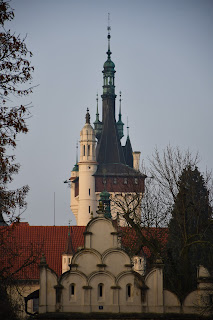From Victoria Falls to the Skeleton Coast – Day 7: Finding a little Europe in Swakopmund
Today was one of our more leisurely days: I spent only about four hours driving, which is less than half the time I spent behind the wheel yesterday. Taking full advantage of the day’s undemanding itinerary, we woke up at seven o’clock and were in no rush to eat breakfast, check the pressure in our car’s tyres (we had to refill two), and refuel at the only gas station within one hour of our hotel. We left Solitaire a little after eight.
Our journey
to the Atlantic coast took us through the Namib-Naukluft National Park, but we
saw our fill of animals for the day before we reached it. As we drove out of
Solitaire, a herd of wildebeests ran across the road, and we later spotted a
gemsbok and several ostriches. The national park itself was more remarkable for
its geological formations than for its wildlife. The road ran past waves of
dark rocks and through a deep canyon, at the bottom of which a river forms when
it rains. We also made a stop by a site with a few quiver trees, which I
thought remarkable for their starlike fistfuls of leaves, each bursting from
the tip of an individual branch.
We reached
the Atlantic at Walvis Bay but failed to find flamingos from the promenade
where tourists usually report seeing them. Instead, the harbour was full of
seagulls and cormorants. We therefore drove quickly onward to Swakopmund. Our
plan for the city was to eat lunch, check into our hotel, see the local sights,
and exchange an additional two hundred dollars. I thought the mussels I ate
tasted too strongly of the sea. The city, however, was quite a singular
experience, with its old German houses that would not feel out of place in a
Central European town, and with later buildings emulating the style in a
somewhat simplified fashion.
We heard a
lot of German in Swakopmund from both tourists and business owners, and the
city seemed to lean into this strange colonial nostalgia with signs written in
the old German font weighed down by very specific historical baggage back in
Europe. Our last stop on our walking trip was the German-owned Kristall
Galerie, which claims to house the largest quartz crystal cluster on display in
the world. Much of the gallery, however, is a glorified gift shop, and the
educational component is far too technical for the average non-geologist.




















Comments
Post a Comment